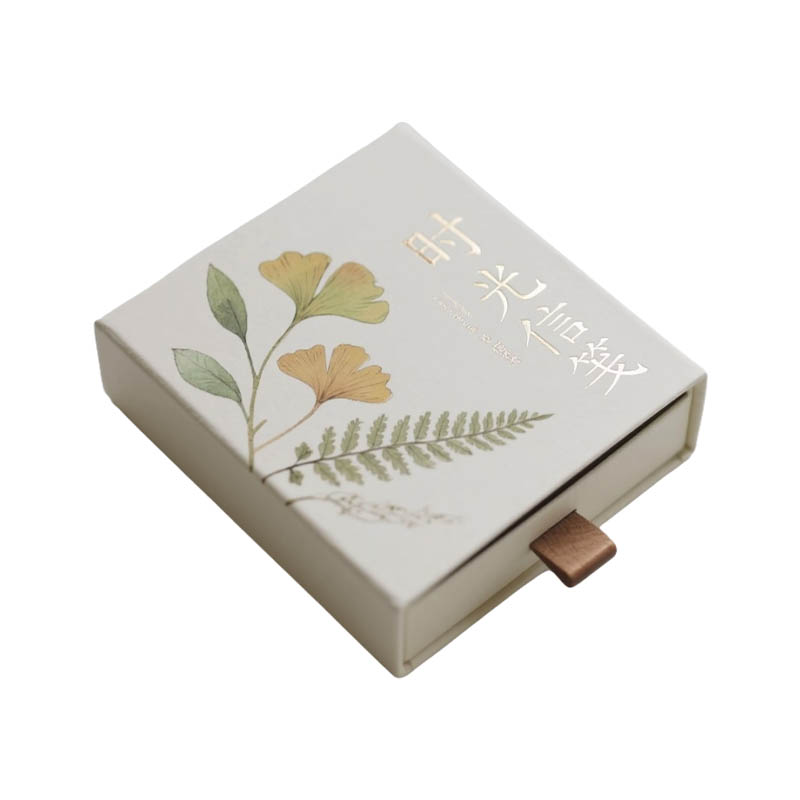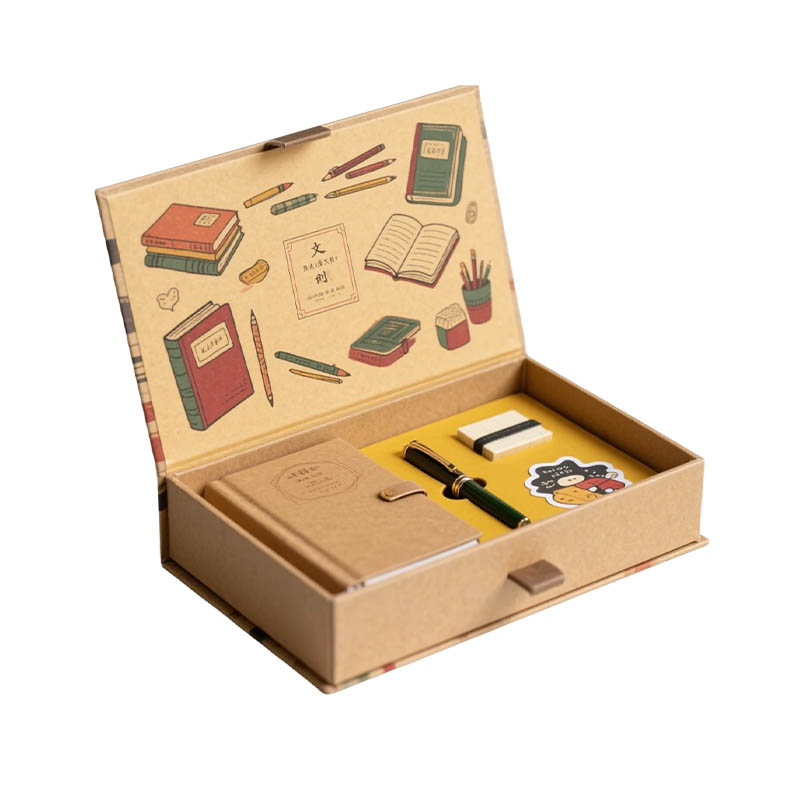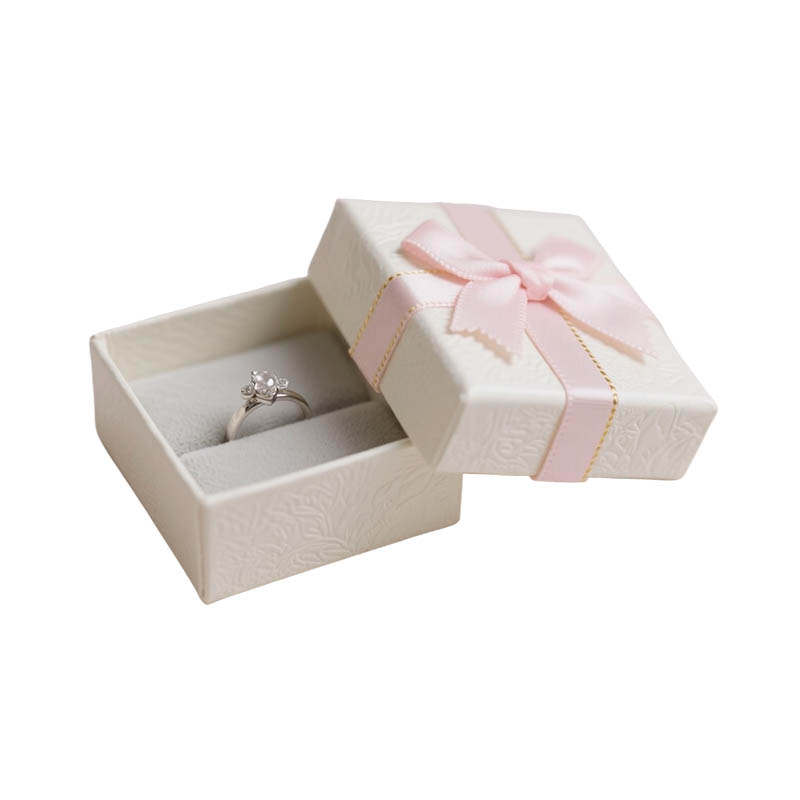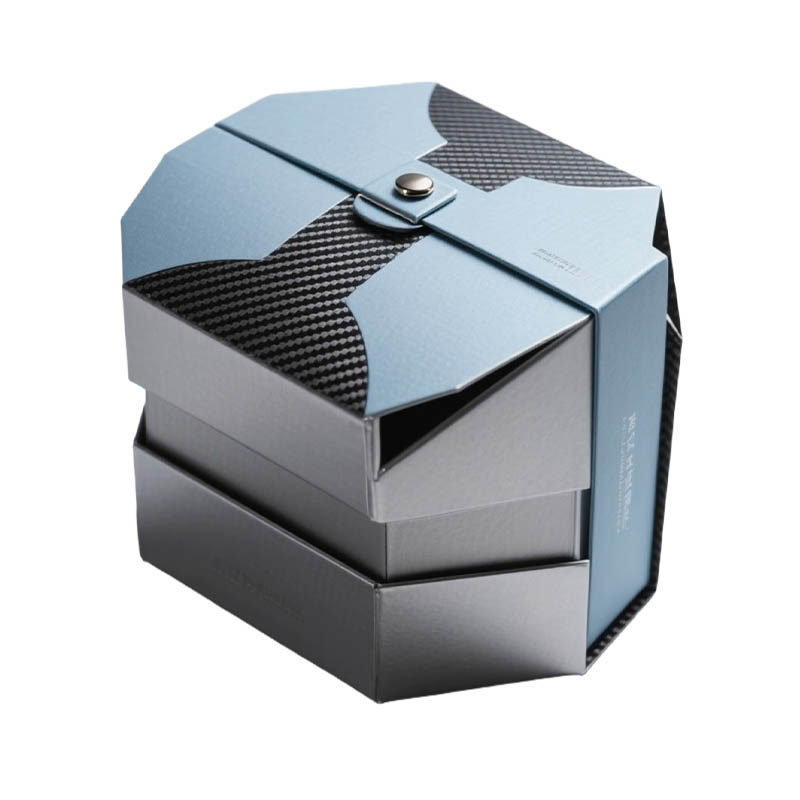How does a telescopic box achieve flexible volume changes through its adjustable structure?
Release Time : 2025-10-11
In modern life and business operations, packaging is no longer simply a container to protect items; it has become a critical tool for improving efficiency, optimizing space, and meeting diverse needs. Traditional fixed-size boxes often face the dilemma of "large boxes cannot be fully filled, small boxes cannot fit", resulting in wasted space, increased shipping costs, and the inconvenience of multiple packing. The telescopic box was invented to address this pain point. Its core value lies in its ingenious adjustable structure, which allows for flexible volume expansion and contraction, allowing a single box to accommodate items of various sizes and quantities, truly realizing the flexible packaging concept of "one box for multiple uses".
The structural design of the telescopic box is inspired by the combination of folding and sliding mechanisms. Its body is typically composed of multiple walls or retractable side panels, connected by precise snaps, slides, or hinges, allowing the box to expand or contract linearly in length, width, or height. When more or larger items need to be accommodated, the user simply stretches the box, expanding the side walls and increasing the interior space. When fewer items are needed, the box collapses to its smallest possible size, fitting the contents snugly and preventing loose space. This adjustment process requires no additional accessories or tools, making it simple and intuitive to operate, significantly improving packing efficiency.
This adjustability extends beyond external dimensions to precisely match the interior space. The telescopic box can be locked in different positions, ensuring a stable structure after expansion, preventing it from accidentally springing back or coming loose during transport. Locking mechanisms are typically located in the corners or sides of the box, ensuring it maintains overall strength while remaining easy to operate with one hand. Whether handling varying sizes of items for e-commerce shipments or organizing seasonal clothing at home, users can adjust the box size to meet their specific needs, achieving tailored packaging that reduces the use of fillers and minimizes packaging material waste.
Telescopic boxes are typically made of high-strength plastic, composite panels, or specialty corrugated paper. These materials offer sufficient rigidity to support the expanded structure while retaining sufficient flexibility for smooth expansion and contraction. The box's surface is reinforced for wear and scratch resistance, making it less susceptible to burrs or cracks over time. Thickened corners enhance impact resistance, ensuring it withstands stress during stacking and transportation without deformation. Some high-end products also feature waterproof and moisture-proof coatings for use in humid environments or outdoor transportation.
The flexibility of telescopic boxes offers unique advantages in a variety of scenarios. In e-commerce logistics, merchants no longer need to stock multiple cardboard boxes. A small number of telescopic boxes can handle a wide range of products, from small accessories to mid-sized appliances, significantly reducing packaging inventory and procurement management costs. When moving or traveling, users can adjust the box's capacity based on luggage size, eliminating the need to carry multiple empty boxes or find larger containers. In storage, empty boxes can be completely folded up, taking up minimal space, making them easy to manage and recycle, making them particularly suitable for warehouses or retail stores with limited space.
Telescopic boxes are also designed with user experience in mind. They often feature handles, wheels, or shoulder straps for easy transport; transparent windows or labeling slots for easy identification of contents; and dust covers or zipper closures for secure storage. These details, combined with the adjustable structure, enhance both ease of use and safety.
Ultimately, the value of telescopic boxes lies not only in their innovative physical functionality but also in their elegant response to uncertainty. In a real world where item sizes vary and demand is unpredictable, they offer a dynamic solution, transforming packaging from passive adaptation to active adjustment. This flexibility epitomizes modern, efficient, intelligent, and sustainable lifestyles.
The structural design of the telescopic box is inspired by the combination of folding and sliding mechanisms. Its body is typically composed of multiple walls or retractable side panels, connected by precise snaps, slides, or hinges, allowing the box to expand or contract linearly in length, width, or height. When more or larger items need to be accommodated, the user simply stretches the box, expanding the side walls and increasing the interior space. When fewer items are needed, the box collapses to its smallest possible size, fitting the contents snugly and preventing loose space. This adjustment process requires no additional accessories or tools, making it simple and intuitive to operate, significantly improving packing efficiency.
This adjustability extends beyond external dimensions to precisely match the interior space. The telescopic box can be locked in different positions, ensuring a stable structure after expansion, preventing it from accidentally springing back or coming loose during transport. Locking mechanisms are typically located in the corners or sides of the box, ensuring it maintains overall strength while remaining easy to operate with one hand. Whether handling varying sizes of items for e-commerce shipments or organizing seasonal clothing at home, users can adjust the box size to meet their specific needs, achieving tailored packaging that reduces the use of fillers and minimizes packaging material waste.
Telescopic boxes are typically made of high-strength plastic, composite panels, or specialty corrugated paper. These materials offer sufficient rigidity to support the expanded structure while retaining sufficient flexibility for smooth expansion and contraction. The box's surface is reinforced for wear and scratch resistance, making it less susceptible to burrs or cracks over time. Thickened corners enhance impact resistance, ensuring it withstands stress during stacking and transportation without deformation. Some high-end products also feature waterproof and moisture-proof coatings for use in humid environments or outdoor transportation.
The flexibility of telescopic boxes offers unique advantages in a variety of scenarios. In e-commerce logistics, merchants no longer need to stock multiple cardboard boxes. A small number of telescopic boxes can handle a wide range of products, from small accessories to mid-sized appliances, significantly reducing packaging inventory and procurement management costs. When moving or traveling, users can adjust the box's capacity based on luggage size, eliminating the need to carry multiple empty boxes or find larger containers. In storage, empty boxes can be completely folded up, taking up minimal space, making them easy to manage and recycle, making them particularly suitable for warehouses or retail stores with limited space.
Telescopic boxes are also designed with user experience in mind. They often feature handles, wheels, or shoulder straps for easy transport; transparent windows or labeling slots for easy identification of contents; and dust covers or zipper closures for secure storage. These details, combined with the adjustable structure, enhance both ease of use and safety.
Ultimately, the value of telescopic boxes lies not only in their innovative physical functionality but also in their elegant response to uncertainty. In a real world where item sizes vary and demand is unpredictable, they offer a dynamic solution, transforming packaging from passive adaptation to active adjustment. This flexibility epitomizes modern, efficient, intelligent, and sustainable lifestyles.







